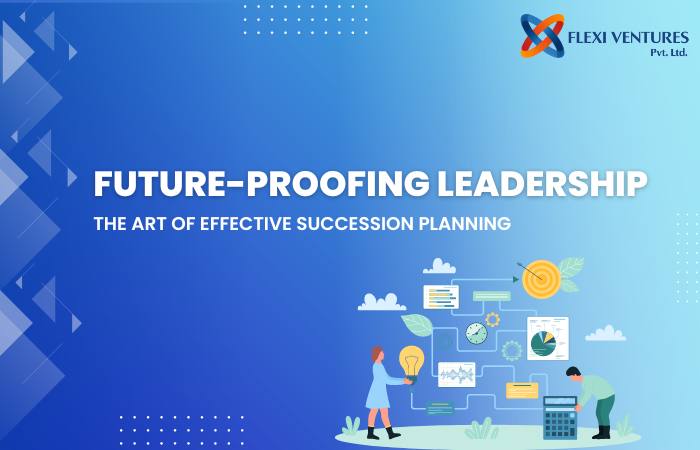If businesses are to continue to run smoothly without nasty interruptions “succession planning” is a must. “Succession Planning” is a business strategy to pass leadership roles down to other employees and prepare them for future leadership roles. Succession planning ensures that businesses aren’t disrupted when people in key areas move on to new opportunities, retire, or pass away. This process not only creates capable candidates who can take on important roles but does so in a seamless manner.
While filling leadership vacancies is one aspect of this process, the other aspect is that it also builds organizational resilience, making the company ready to handle unexpected departures of key personnel. By anticipating such changes, companies can remain stable, preserve the core business, and transfer vital knowledge seamlessly.
Why Succession Planning Matters?
Companies must sustain even when their people have long moved on. And for this to happen seamlessly, succession planning is necessary. Not only does it ensure a smooth leadership transition but minimizes disruptions in the operational workflow and maintains a steady course for the organization. Such planning goes a long way to preserve the company’s culture and core values, which decide long-term stability, especially so in SMEs.
Plus, succession planning happens, in the form of mentoring over a certain period. It not only gets you the right leaders with relevant skills, it maintains business continuity. There is a backup of capable individuals ready to be nurtured to step into leadership roles whenever needed. Usually focussed on internal talent development, this strategy not only strengthens the leadership team but also ensures business continuity, as these future leaders are aware of all aspects of the company’s operations and progressive direction.
Key Elements of Effective Succession Planning
“Spotting the Gems”
Succession planning is all very well but for the process to begin, it’s important to identify the right people. You need to recognize and nurture people with the potential to carry the baton. It involves having processes in place that enable a proactive spotting of high-potential employees who are capable of taking on leadership roles. Besides, finding your best talent or gems, the process also includes their development through targeted training and opportunities.
“Cultivating Leadership Skills”
Once the talent is identified, they must be enrolled in Leadership Development Programs to bring them up-to-date with the necessary skills and competencies. These programs are specially designed to cultivate leadership skills in a structured manner so that future leaders get the right kind of environment to grow and excel. These include training, workshops, and practical experiences that are imperative for future leadership positions, ensuring a seamless transition when necessary.
“Passing the Torch”
Besides, dedicated programs, Mentorship and Coaching are also important in guiding the next generation of leaders toward excellence in their future roles. Experienced leaders must take the high-potential employees under their umbrella, and share wisdom, experience, support, and so on. Such one-on-one guidance will give rise to highly competent leaders who are ready to accept business challenges, excel, grow, and lead the organization forward to a bright future.
“Quantifying Leadership Pipeline”
Just as with everything else, a true assessment of the progress of Succession Planning is by quantitative methods. Such metrics are vital for measuring and evaluating the progress of the leadership pipeline. Metrics such as thought clarity, judgment about people, and personal integrity or commitment, quantify the effectiveness of the succession planning process, track the development of potential leaders, and ensure that the company is ready for immediate leadership transitions without hassle. By regularly assessing these metrics, easier and better decisions with changes are possible. It is also crucial to quantify the number of individuals who can successfully take over leadership roles to gauge the effectiveness of these development initiatives.
Cultivating a Culture of Succession Planning
“Leadership Buy-In”
Leadership buy-in refers to the authentic agreement and active support from your leadership team for achieving the goal of succession planning. Leaders must get involved in the vision and actively contribute to this goal. The planning initiative cannot be superficial and considered as something HR must implement. Just like several processes, taking the process beyond HR and papers is important, people in key positions must lead and support the initiative at every stage. Teams and team members within the company will take succession planning seriously only when they see leaders participating and promoting it actively.
“Employee-Driven Leadership Growth”
On the other hand, the success of this initiative also needs equal or greater participation from staff. This means motivating them to work in a way that allows them to be involved in shaping their leadership growth. Such an engagement is a great motivator and supports long-term careers within the same company. With employees having a say in succession planning, companies can build a better and more dynamic leadership development process.
“Growing Our Leaders”
Instead of looking outside to replace people in crucial roles, it’s far more advantageous to utilise internal succession planning. In this process, you focus on identifying and nurturing talent within the organization to take on future leadership roles, thus motivating people to perform better and stay longer. The familiarity of the employee with the company’s key processes and goals and vice versa makes this approach a mutually beneficial one. By enabling people at lower ranks to step into higher positions, you are assured of a smoother transition in a quick time. Clear career progression paths are also an excellent motivation tool to retain high-quality people.
“Strategic Talent Acquisition”
Sometimes, internal skills may be lacking and it becomes necessary to look outside to fill critical roles. Such an external succession planning strategy is useful when the company needs a specific skill set, and experience or wants a fresh leadership perspective. Carefully hiring external candidates, organizations can bring in new, balance internal development, and address immediate competency gaps. This also allows the company to respond quickly to changing market demands and at the same get the benefits of a diverse talent pool.
“Ensuring Business Continuity”
As the name suggests, Emergency succession planning prepares for sudden changes and vacancies in leadership roles. Such an emergency can arise due to resignations, health issues, or other unforeseen situations. It involves having specific successors for every role with a clear outline of responsibilities and reporting lines. Having such temporary leaders is one of the best ways to overcome a crisis with minimal disruptions. With this kind of plan, there are almost zero disruptions in the daily operations.
Challenges and Solutions
“Overcoming Obstacles”
Succession planning has its own set of challenges. On the top of the list is a lack of trust in the people, making it difficult to find the right successor and potentially undercutting them. Some companies may have a passive-aggressive culture, with issues such as ambiguity, and procrastination. Another issue that can cause further complications is the bias of some leaders, making them choose successors who are reflections of them. Additionally, accurate data collection, hypothetical valuations, and enabling smooth transitions are other issues that must be ironed out.
“Smooth Transition Practices”
For a smooth transition, companies need foresight and a long-term perspective, with a focus on empowering potential leaders and tracking relevant data. You may need to achieve a balance between internal and external hiring for leadership roles. Continuous assessment of internal talent for skill strengths, weaknesses, and growth potential, any training needs to complete skill gaps is a must. It is important to avoid ambiguity, procrastination, and biased selection processes to find excellent leaders.
“Digital Solutions for Future Leaders”
Succession planning can benefit immensely from the use of Technology. It enables a systematic identification and management of employees who are suitable for future leadership roles. Artificial Intelligence (AI) is much faster and effective in analysing large datasets to narrow down to the right people. There are succession planning tools and software with innovative features which allow you to make relevant, data-driven decisions.
Conclusion
Effective succession planning is an important strategy that every business must adopt for hassle-free continuity and long-term success. To achieve this, companies must invest in succession planning as a strategic initiative. Finding and nuturing right internal and external talent and preparing them for future leadership role is an absolute must if the company is to maintain its operations and move towards growth and success.


